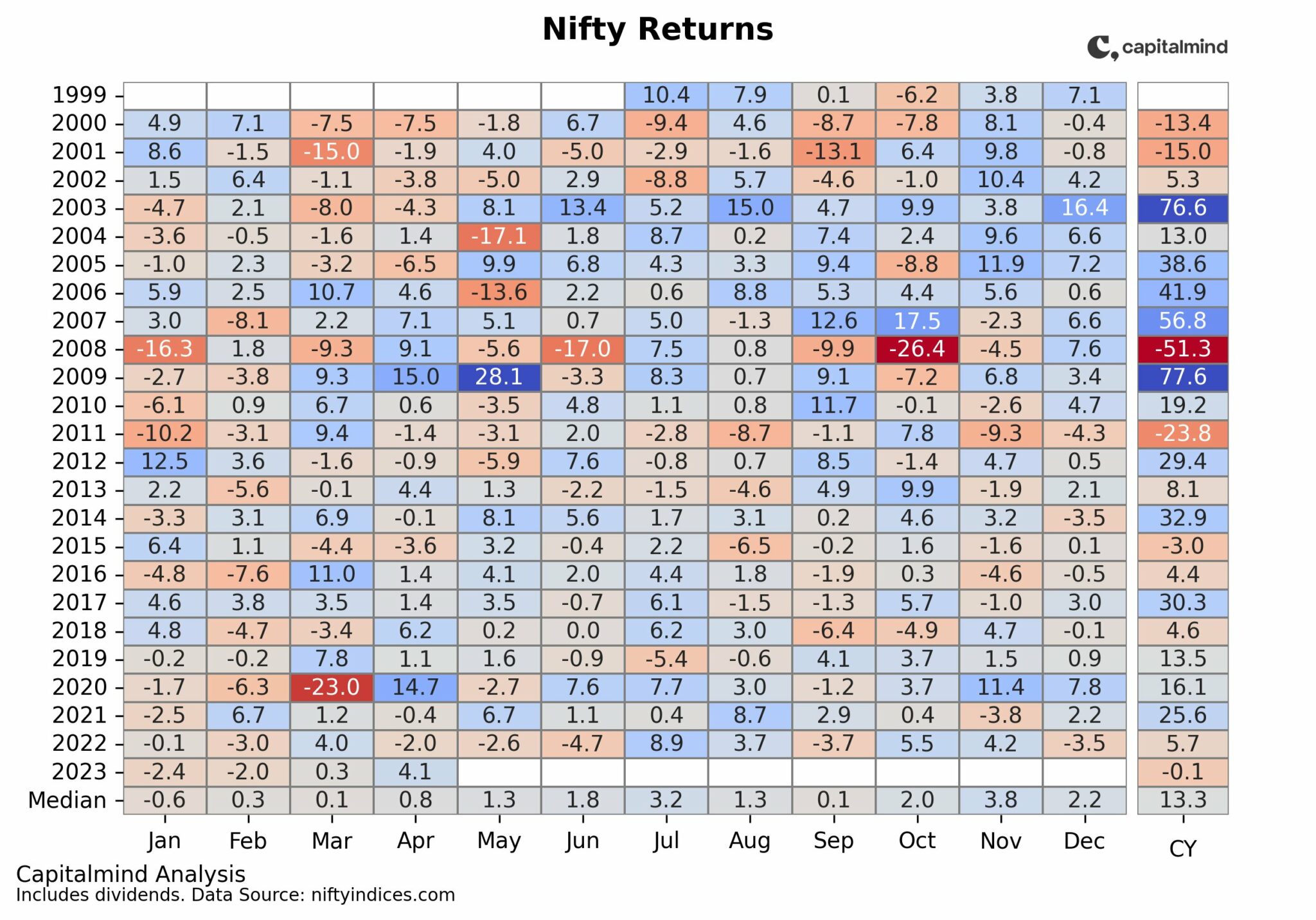I use an indicator to figure out if the market is overbought or oversold. This simply takes the number of Nifty stocks above their 20 Day Moving Averages (DMAs) and subtracts from it the number of stocks below their 20 DMAs. Further, we smoothen it with a 5 day average. This figure will oscillate from +50 to -50. And typically it gives you a good leading indication of a move.
While the Nifty has zoomed up, we have the indicator not going to absolute extremes (above 35 and below -35 are extremes)
The trading strategy I use is to go long when the indicator goes above 30 and then reverses below. Yet, this only has a 60-70% chance of success, and you have to use a close stop loss (in fact, the 2009 election timeframe gave a false short call!). So you have to use it with care and control losses – I use options and the last year or so have generated about 6-7 calls with reasonable success.
Remember that this move wasn’t recognized by the indicator – it didn’t go to -30 before the upmove. So while I made money on a short trade from 5400 to about 5280, I didn’t get a long signal at all! Disclosure: Long on specific stocks, not on index.
The current state of the indicator means two things – there is distribution (that is, the largest caps are not moving as much and thus aren’t chopping through their DMAs) which, in conjunction with the fact that there is huge accumulation in the trading midcaps, I foresee a bad ending for this move within two months. In fact the number of stocks above their 20 DMAs is just 42 (and 8 below). Two days ago, the score was 44-6.
The other thing is that we have broken a long trading range and the indicator doesn’t seem to work very well during big breakouts. It’s a mean reversion trading strategy and very short term; and obviously a trend indicator does better during breakouts. So going short now may not even pay off. Just saying, because this stuff isn’t designed to be simple or easy – you have to take calculated risks, and understand these are risks.
Also, this post is purely for education, not investment purposes etc. Don’t follow any of this unless you’re willing to lose money in the markets.




